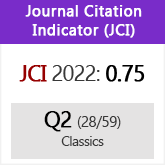Verbos de movimiento virtual en griego antiguo
DOI:
https://doi.org/10.3989/emerita.2011.12.1018Palabras clave:
virtualidad, movimiento virtual, verbos de movimiento, tipo textual descriptivo, referencia temporal-aspectual genérica, activa anticausativaResumen
El presente trabajo es un estudio de los verbos de movimiento empleados en las «construcciones de movimiento virtual» en griego antiguo. Los autores proponen que estas construcciones implican una proyección metafórica y estudian la incidencia de la metáfora en la construcción sintáctica y el empleo de las voces. Por otra parte, las referencias genérica y de estado asociadas a los verbos de movimiento virtual se explican a partir de su carácter descriptivo y el tipo textual descriptivo en que tienden a aparecer.
Descargas
Citas
Adrados, F. R. 1992: Nueva sintaxis del griego antiguo, Madrid.
Allan, R. J. 2003: The middle voice in Ancient Greek: a study in polysemy, Ámsterdam.
Boel, G. de 1988: Goal accusative and object accusative in Homer, Bruselas.
Chantraine, P. 1963: Grammaire homérique, París.
Coulson, S. y Oakley, T. 2005: «Blended and coded meaning: literal and figurative meaning in cognitive semantics», Journal of Pragmatics 37, pp. 1510-1536. http://dx.doi.org/10.1016/j.pragma.2004.09.010
Crespo, E., Conti, L. y Maquieira, H. 2003: Sintaxis del griego clásico, Madrid.
Fauconnier, G. 1997: Mappings in thought and language, Cambridge.
Goodwin, W. W. 1889: Syntax of the moods and tenses of the Greek verb, Londres.
Horrocks, G. C. 1983: Space and time in Homer: prepositional and adverbial particles in the Greek epic, Nueva York.
Iwata, S. 1996: «Motion and extent: two sides of the same coin», Studia Linguistica 50.3, pp. 256-282. http://dx.doi.org/10.1111/j.1467-9582.1996.tb00351.x
Jackendoff, R. 1983: Semantics and cognition, Cambridge.
Jiménez Delgado, J. M. 2008a: «Construcciones en voz activa en lugar de mediopasiva en Heródoto», Habis 39, pp. 7-30.
Jiménez Delgado, J. M. 2008b: «Metáfora y cambios de estructura semántica en el verbo griego antiguo», en Martínez Vázquez, R. y Jiménez Delgado, J. M. (eds.), Metáfora conceptual y verbo griego antiguo, Zaragoza, pp. 116-179.
Kroon, C. 2007: «Discourse Modes and the Use of Tenses in Ovid’s Metamorphoses », en Allan, R. J. y Buijs, M. (eds.), The language of literature. Linguistic approaches to classical texts, Leiden, pp. 65-92.
Kühner, R. y Gerth, B. 1898: Ausführliche Grammatik der griechischen Sprache II, Hannover.
Langacker, R. W. 1986: «Abstract motion», Proceedings of the Annual Meeting of the Berkely Linguistics Society 12, pp. 455-471.
Langacker, R. W. 1990: «Subjectification», Cognitive Linguistics 1.1, pp. 5-38. http://dx.doi.org/10.1515/cogl.1990.1.1.5
Langacker, R. W. 1991: Foundations of cognitive grammar, Vol. II: Descriptive application, Standford.
Langacker, R. W. 1999: «Virtual Reality», Studies in the Linguistic Sciences 29, pp. 77-103.
Luraghi, S. 2003: On the meaning of prepositions and cases. The expression of semantic roles in Ancient Greek, Ámsterdam-Filadelfia.
Martínez Vázquez, R. 1998: «The Ancient Greek concept of transitivity in a current cognitive semantic theory», en Martínez Vázquez, M. (ed.), Transitivity revisited, Huelva, pp. 15-35.
Martínez Vázquez, R. 2008a: «La base conceptual de la metáfora», en Martínez Vázquez, R. y Jiménez Delgado, J. M. (eds.), Metáfora conceptual y verbo griego antiguo, Zaragoza, pp. 11-57.
Martínez Vázquez, R. 2008b: «Metáfora conceptual y marco predicativo», en Martínez Vázquez, R. y Jiménez Delgado, J. M. (eds.), Metáfora conceptual y verbo griego antiguo, Zaragoza, pp. 58-115.
Martínez Vázquez, R. 2009: «Aspectos cognitivos del aspecto verbal: metonimia y presente por perfecto en griego antiguo», Habis 40, pp. 7-16.
Martínez Vázquez, R. 2011: «Tipología textual, adverbios conjuntivos y la Historia de Tucídides», en Carande Herrero, R. y López-Cañete Quiles, D. (eds.), Pro Tantis Redditur. Homenaje a Juan Gil en Sevilla, Sevilla, pp. 95-114.
Matlock, T. 2004: «The conceptual motivation of fictive motion», en Radden, G. y Dirven, R. (eds.), Studies in linguistic motivation, Berlín, pp. 221-248.
Matsumoto, Y. 1996: «Subjective motion in English and Japanese verbs», Cognitive Linguistics 7.2, pp. 183-226. http://dx.doi.org/10.1515/cogl.1996.7.2.183
Méndez Dosuna, J. 2009: «Movimiento ficticio en griego antiguo: tras las huellas del viajero (in)visible», RSEL 39.1, pp. 5-32.
Rodenbusch, E. 1911: «Präsentia in perfektischer Bedeutung», IF 28, pp. 252-285.
Rojo, A. y Valenzuela, J. 2003: «Fictive motion in English and Spanish», International Journal of English Studies 3.2, pp. 125-151.
Schwyzer, E. y Debrunner, A. 1950: Griechische Grammatik II, Múnich.
Sivonen, J. 2005: «An exercise in cognitive lexical semantics: the case of the Finnish motion verb kiertää», SKY Journal of Linguistics 18, pp. 311-340.
Smyth, H. W. 1920: A Greek grammar for colleges, Cambridge.
Stahl, J. M. 1907: Kritisch-historische Syntax des griechischen Verbums der klassischen Zeit, Hildesheim.
Takahashi, K. 2001: «Access path expressions in Thai», en Cienki, A., Luke, B. J. y Smith, M. B. (eds.), Conceptual and Discourse Factors in Linguistic Structure, Stanford, pp. 237-252.
Talmy, L. 1983: «How language structures space», en Pick, H. L. Jr. y Acredolo, L. P. (eds.), Spatial orientation: theory, research, and application, Nueva York, pp. 225-282.
Talmy, L. 1996: «Fictive motion in language and “ception”», en Bloom, P., Peterson, M. A., Nadel, L. y Garrett, M. F. (eds.), Language and space, Cambridge, pp. 211-276.
Talmy, L. 2000: Toward a cognitive semantics I, Boston.
Wakker, G. 1994: Conditions and conditionals. An investigation of Ancient Greek, Ámsterdam.
Descargas
Publicado
Cómo citar
Número
Sección
Licencia
Derechos de autor 2011 Consejo Superior de Investigaciones Científicas (CSIC)

Esta obra está bajo una licencia internacional Creative Commons Atribución 4.0.
© CSIC. Los originales publicados en las ediciones impresa y electrónica de esta Revista son propiedad del Consejo Superior de Investigaciones Científicas, siendo necesario citar la procedencia en cualquier reproducción parcial o total.Salvo indicación contraria, todos los contenidos de la edición electrónica se distribuyen bajo una licencia de uso y distribución “Creative Commons Reconocimiento 4.0 Internacional ” (CC BY 4.0). Puede consultar desde aquí la versión informativa y el texto legal de la licencia. Esta circunstancia ha de hacerse constar expresamente de esta forma cuando sea necesario.
No se autoriza el depósito en repositorios, páginas web personales o similares de cualquier otra versión distinta a la publicada por el editor.














